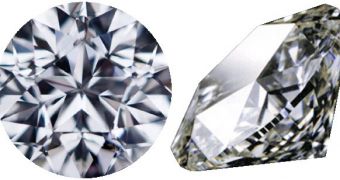The quantum computer is every IT specialist's hope and every gamer's dream. It is essentially a computer that makes direct use of distinctively quantum mechanical phenomena for computation, like superposition and entanglement, to perform operations on data.
A team of physicists at Harvard University have successfully overcome some of the major challenges in quantum computing, by demonstrating that by manipulating individual carbon-13 atoms with extraordinary precision, they were able to create stable quantum mechanical memory and a small quantum processor, which they call a quantum register, operating at room temperature.
This is extremely good news for the field of quantum computing, which could mean that this futuristic concept will become less fiction and more science, in the not so distant future. The ability to make such systems work under ordinary conditions is a breakthrough in the field.
"These experiments lay the groundwork for development of a new approach to quantum information systems," says Mikhail D. Lukin, professor of physics in Harvard's Faculty of Arts and Sciences.
The new technique makes use of spinning properties of nuclei to encode quantum bits and overcomes the big problem of decoherence - the quantum system losing its stability in contact with exterior forces - by manipulating nuclear spins of carbon-13 - found in natural diamonds - via a nearby single electron whose own spin can be controlled with optical and microwave radiation.
Controlling the excitation of an electron is achieved by focusing laser light on a nitrogen vacancy center, a stable defect in a diamond lattice where nitrogen replaces an atom of carbon and develops an electronic spin in its ground state, causing the single electron's spin to act as a very sensitive magnetic probe with extraordinary spatial resolution.
Furthermore, the scientists were able to use the nuclear spin as a very robust quantum memory by controlling the interaction between it and the electron.
"Beyond specific applications in quantum information science," the authors write, "our measurements show that the electron spin can be used as a sensitive local magnetic probe that allows for a remarkable degree of control over individual nuclear spins."

 14 DAY TRIAL //
14 DAY TRIAL //